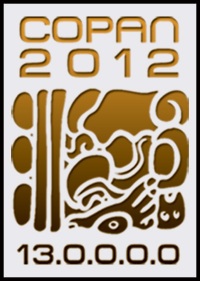By Marco Cáceres
Editorial columns are often about being critical or pointing out some defect in the “system”. If it has something to do with Honduras, it’s usually about some failure of the government or a political leader, or issues such as crime and drug trafficking. It is extremely hard to write an editorial that is positive, because for some reason it is harder to be inspired when things go according to plan and there is no fuss or muss. Perhaps it is because when all goes well, you think to yourself… “Fine, that’s the way it should be, that’s normal.” Unfortunately, in the case of Honduras, when something works out well or spectacularly well, with no glitches and no complaints and no regrets, my experience has been that this tends to be more the exception than the norm. Honduras often has a way of testing one’s patience and thus cultivating one’s capacity for creativity, flexibility, adaptability, and innovation. Sometimes, though, it’s just nice to be able to sit back and not have to worry about the curveballs.
(Warning: This column will not be about politics or corruption or violence or dysfunctionality. Taking a break.)
As we prepare for the 13th annual Conference on Honduras on October 18-20, I want to point out that this event has had very few curveballs thrown its way since it began being staged in Copán Ruinas in 2003… and certainly none that caused the event to miss a step. The primary reason for the consistency and success of the Conference on Honduras is that the town of Copán Ruinas has simply been a tremendous host; it really is the perfect location for the conference… the right feel and the right accommodations.
The conference has become a tradition in Copán, and I think that finally there is starting to be an understanding throughout Honduras about what this event is all about — networking to share information about volunteer projects and find ways to work together. There is also a marked realization that, although the event is still dominated by North Americans, one of the central aims of the conference is to create long-term and sustainable partnerships between foreign volunteers and Hondurans. The Honduran presence (and active participation) is growing.
But the tradition could not have been established had it not been for the genuine support of Copán’s business community and municipal government. We have always encouraged the people of the town to think of the conference as theirs, rather than something alien… to take ownership of it. I think Copánecos have responded nicely, and I thank them.
I specifically wish to thank projecthonduras.com’s local director of the Conference on Honduras, Sandra Guerra. Sandra is the owner of Casa de Todo, which is the homebase for the event. She has been there from the start, and she is the indispensable key to the success of the Conference on Honduras. She has that unique ability to anticipate all curveballs and put ’em away.
Of course, I will always mention Doña Albita and her Llama del Bosque restaurant. She has fed us so well for so long, and I am eternally indebted to her. Then there is Pat of Café Miramundo and Macaw Mountain Bird Park & Nature Reserve. Hey, great guy, great coffee.
I also want to express my deep appreciation to Darío Domínguez, the general manager of the Clarion Copán Ruinas hotel. From 2003 through 2010, the Conference on Honduras was held at the municipal conference hall near the central park in Copán. It was a fine facility, but last year we were unable to reserve the space on time, and so we decided to try the Clarion, which is located just a few minutes outside of town.
The decision to go with the Clarion turned out to be a good one. The conference did not miss a beat. The accommodations were wonderful and the service was exceptional — so much so that we did not hesitate to renew the relationship with Darío and the Clarion for the Conference on Honduras 2012.
When you find something that works, you stick with it. And that is precisely what we have found with the Clarion Copán Ruinas. In all my travels, I have never come across a hotel staff that is so thoroughly professional and consistently helpful and courteous. It’s a beautiful hotel… run by an even more beautiful group of people. I look forward to working with them again. (8/8/12) (photo courtesy Clarion Copán Ruinas)




